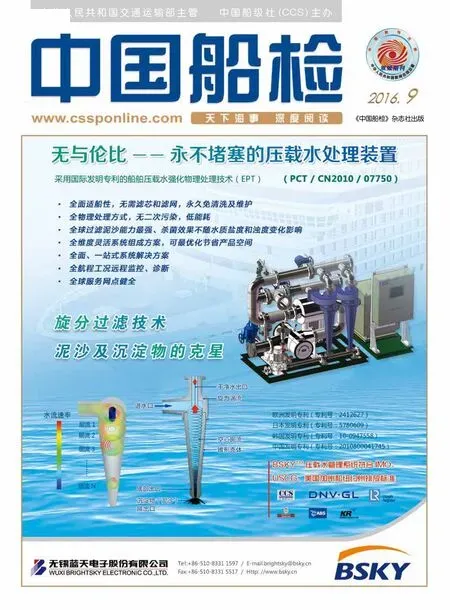How to Understand Port Overcapacity?
Reporter Shi Jingli
After China’s economy entered into the new normal, the port overcapacity is deeply concerned by the industry. Then, is it true about port overcapacity? Ning Tao, director of the economic policy and development strategy research center of water transport academy of the Ministry of Transport in China, objectively analyzes the current stage and status of port overcapacity to the industry.
He said what criteria should be based on judging port overcapacity? First of all, judging from the definition level, unlike steel, glass and other industries, appropriate surplus is necessary for transport facilities because of public infrastructure properties. For example, the design of urban road capacity must have a certain reserve space.Because of construction period, it is impossible to match capacity and demand in time. If there is no space reserved,it is difficult to solve rush hours or emergent problems effectively. It is also true with port, the ability of moderate advance is necessary in face of seasonal fluctuations or unexpected events. Going through development and construction of the “12thFive-Year Plan”, Chinese ports have changed from basic adaptation to moderate advance.Certainly, ratio is higher in some parts as an exception, but it is far away from serious oversupply state in the whole.
Furthermore, judging from the level of return on investment, according to the latest statistics, the average throughput investment increase per ton in coastal ports amounted to approximately 150 yuan/ton from 2005 to 2009. The figure was about 160 yuan/ton from 2009 to 2014.The growth rate of amounted throughput investment per ton was 8.5% comparing the past five years and the fi rst fi ve years. As the national economy entering into a new normal, the fi gure is within an acceptable range.
In addition, judging from the level of corporate prof i t, it is said that the method can be very intuitively clear to monitor industry trends. The cargo throughput of state-owned coastal port enterprises was 5.26 billion tons in 2015, accounting for 65% of the total coastal port cargo throughput.155 million TEU container throughputs was completed, accounting for 82% of the total coastal container throughput. The total asset of 42 state-owned port enterprises of the country amounted to 1 trillion yuan and the total net prof i t was 23.8 billion yuan in 2015. Taking Qingdao port as an example,the net profit was 1.905 billion yuan in 2015, rising by 20.07% compared with the same period in the last year.According to the second-quarter net income of Qingdao port in 2016, the net prof i t was 1.25 billion yuan, increasing by 11.64% compared with the same period in the last year. It can be said that ports bring important support to economic and social development. What should be noted here is that port corporations are not an industry with exorbitant profit. On the contrary, as a service industry,its prof i t is within a reasonable prof i t range. Although the anticipation for future port development is declination, it is in the moderately advanced stage on the whole.
With regard to future development of the port, Ning Tao believes that first of all we should be rational about the pace of development of the port and avoid excessive competition. Ports have laid a solid foundation for the fast development of China’s economy. Each port lowers transaction costs through competition, which attracted new industry and can be considered as good experience.However, there is overcapacity in local areas, which indicates that the area falls into a state of excessive competition to some extent, resulting in a number of resources for which optimal configuration cannot be realized. So resource consolidation is common around different areas to cope with unnecessary competition.According to the study, after China’s economy entering into a new normal, it is true that total demand shows an easing trend as to quantity growth. As a result, decision makers are called for rational treatment.
Secondly, treat throughput rationally. Throughput is very important, because throughput is the representative of port development to a large extent and also the representative of economic development. Only with certain amount of throughput can routes be enriched. Necessary guarantee of throughput is the foundation and core of valueadded products mentioned above. In addition, with no throughput, we also have no value-added service space.However, it should not be overemphasized. According to the data obtained, comparing benefits of history throughput and current throughput, marginal benefits brought from throughput per unit is decreasing, that is to say that impact of added throughput on direct economic benefit is not particularly evident. It is recommended that transformation and upgrading under the new normal requires ports seeking more refined services, such as development of soft environment, building of inland transport and service functions in the hinterland. In addition, port handling was basic to meet diversified development of the port.1+1>2 can be realized only when we do our own work to the best.
Thirdly, treat excess and competitive relationship rationally. For ports, services were not perfect when there was a lack of hardware in the past. Competition can improve shortcomings and come from certain surplus.Ensuring an appropriate degree of competition should be noted. Market economy is the surplus economy. For a mature market, capacity is always a slight surplus or excessive. In addition, overcapacity can phase out inefficient capacity of markets, which is a normal metabolism to the market.

